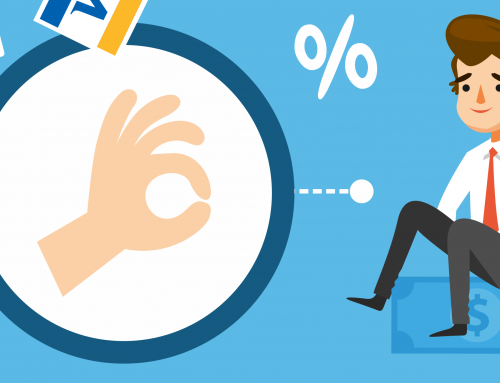Life is hard and challenging, as a result, you may be struggling with finances. Going on vacation, buying new clothing, getting the newest car, or buying a house is something that you cannot do at the moment. You would think that people your age, like your friends, would be in a similar situation right? Nope. You see that they are currently on vacation, bought the best clothing brands, drive the newest car, or live in a nice home. “How?” you must be asking yourself when looking at their Instagram, Facebook, or Twitter. Before you get disappointed with your life, because you might not have everything they have, look at your social media profiles? Did you post when you were struggling or did you post only positive moments in your life? Only the positive you say? For all you know, they could have declared bankruptcy. Read the article below to see why you shouldn’t be concerned about what others post on Instagram.
Don’t bother wondering why your friends seem to have nicer homes, cars, and vacations — there’s only one measurement that matters
It seems like I’m falling behind my friends financially. They take nicer vacations and drive more expensive cars than mine. How am I really doing compared with others my age? It happens every morning, from Wichita to Washington: We wake up feeling good. We pick up our phones and scroll through Instagram.
We guess at the carat weight of a college friend’s engagement ring and marvel at a cousin’s shiny new truck. We’re lifted into tornadoes of jealousy over photos of a friend’s puppy. We puzzle over how they afford it. But this social media highlight reel leaves a lot out.
“You don’t find people posting about missing a rent payment,” says Doug Amis, a certified financial planner and president at Cardinal Retirement Planning, Inc. in Cary, North Carolina.
Know where you really stand
If you’re under 35, here’s how your peers are really doing, according to the Federal Reserve Board’s Survey of Consumer Finances:
The median income for families with a head of household under 35 was $40,500 in 2016. Nearly half of families under 35 had credit card balances, with median debt of $1,400 per family. About 42% of families under 35 had retirement accounts, and their median value was $12,300.
Lastly, about 45% of families with a head of household under 35 had education debt. The median amount was $18,500 per family, but the amount varies widely by income level and highest degree attained.
Follow rules of thumb, not Instagram
You won’t find a real answer to how you’re doing in a Federal Reserve survey or a social media feed.
You will find it by measuring yourself against rules of thumb, refined over decades and endorsed by financial pros, that point the way toward true financial health. Start with these:
- Do you have an emergency fund of at least $500? It should eventually include three to six months of basic expenses.
- Are you paying down high-interest debt, like credit cards and personal loans? That should come before attacking lower-interest debt like student loans.
- Do you spend less than you earn? A budget based on the 50/30/20 rule can help: You’ll spend no more than 50% of after-tax income on necessities, no more than 30% on wants and at least 20% on savings and debt repayment.
- Do you follow the 28/36 rule? Lenders use this to qualify you for a mortgage, but Amis suggests it’s also a helpful way to assess cash flow even if you’re years from buying a home. Housing costs should be less than 28% of your pretax income. With other debt payments, like credit card, car, or student loan bills, the total should come under 36% of pretax income.
- Do you save for retirement? Socking away 10% to 15% of your pretax income is the goal.
These guidelines are aspirational. But your progress toward them is a better measure of whether your money is working for you than surveys or Instagram. In the end, your financial well-being boils down to whether you can meet your basic needs today, plan for a better tomorrow, and enjoy life as you go.
Set your own goals
While these best-case scenarios might not seem feasible right now, don’t wait to start saving until you can set aside the amount you feel you’re supposed to, says Emily Guy Birken, author of “End Financial Stress Now.” For instance, save even 1% of your income for retirement if that’s all you can afford. Increase the amount by 1% every six months as you get accustomed to having less in your paycheck — or at least whenever you get a raise.
And most importantly, set your own goals — when to buy a house, say, or how quickly to pay off student loans — based on what you value most. While some friends may take fancy vacations, they may also have massive credit card debt you don’t know about. Besides, Birken says, “Would you really choose to have all of their problems, and have all of their foibles, flaws, and issues, just because they’ve got one thing you don’t have?”
thumbnail courtesy of businessinsider.com
Still going to envy people you see on social media? Hopefully not. You have no idea how much debt they have because of their new car, similar to they not knowing how much debt you have. If anything, you should feel better about yourself. They might have a new car, but you just saved twice the price of the car they bought. If they bought a new Mercedes-Benz for $50,000, yes, they spent $50,000, but they will allow losing 50-80% of the additional value because of car depreciation. If you invested the same $50,000 for the life of the car, 10 years for example at 7% invest. You made $50,000 of invest on top of your $50,000. $100,000 is the total. Now that person with the car sell it for $10,000 & lost the $40,000 of the initial price because of depreciation & $50,000 of invest if invested. They lost $90,000 to drive that Mercedes-Benz for 10 years. You don’t see that on Instagram.
Basically, your net worth is more important than any house, car, clothing, or vacation. So next time you see someone on social media “living the good life”, just know you can look rich or be rich. They chose to look rich, which one will you pick? If you enjoyed this article, please share it with someone that is “Looking rich”, but might not have enough to live rich.



